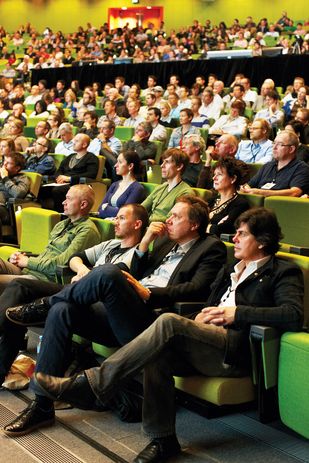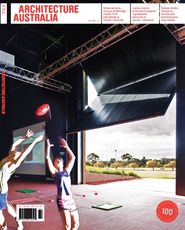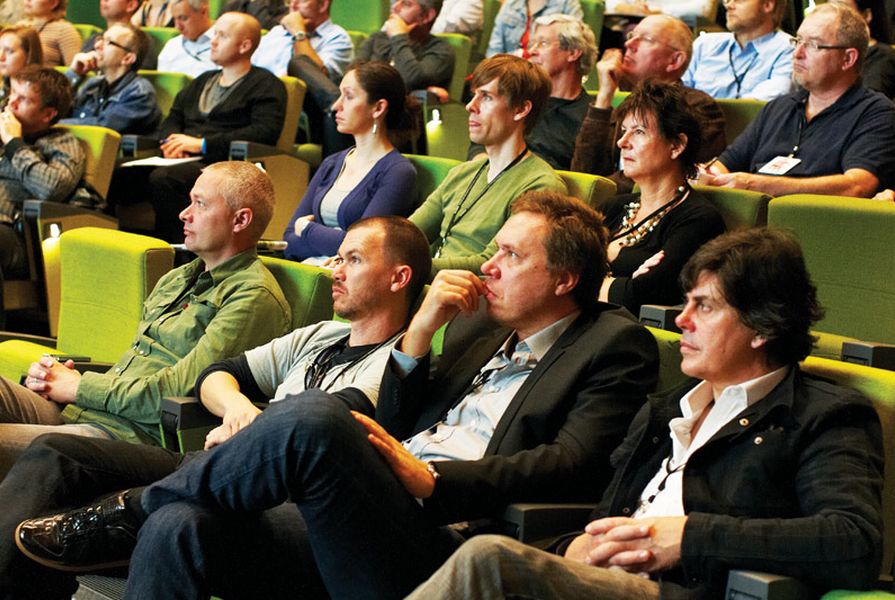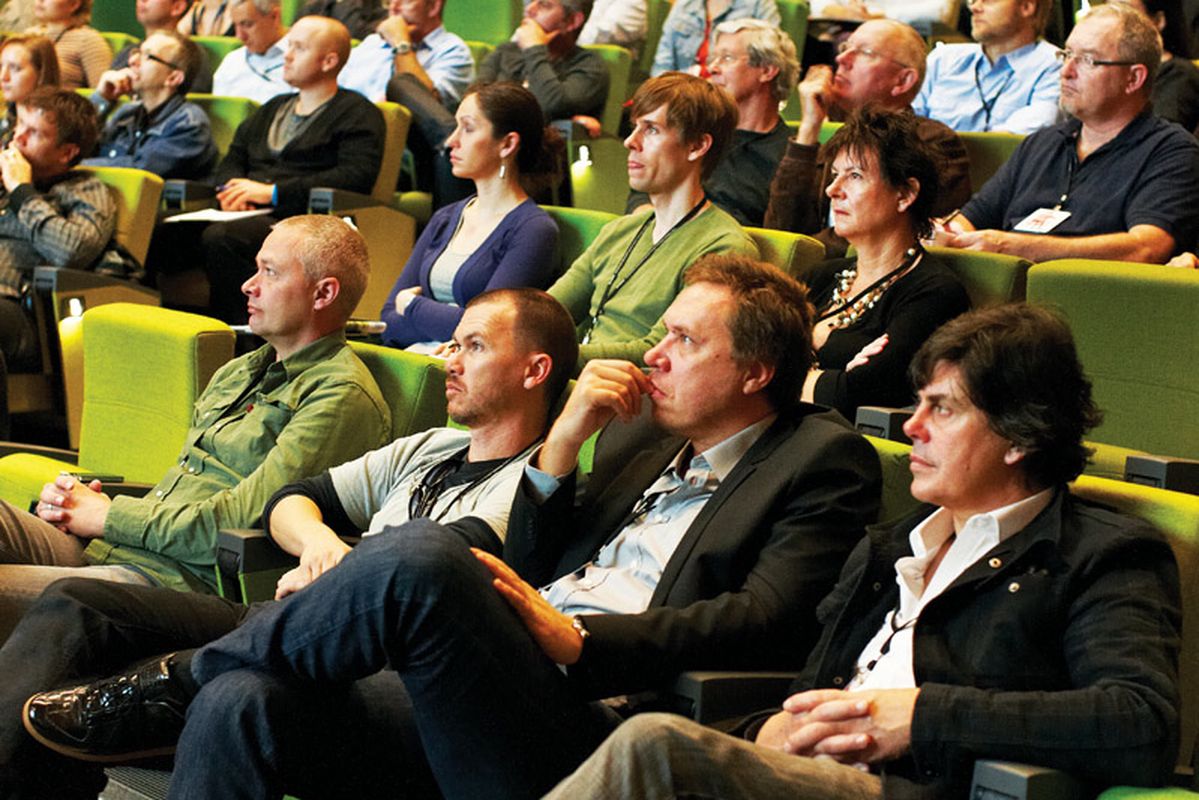Three creative directors, presentations from eleven international architects and seventeen local architects/academics, watched and engaged with by over one thousand local architects, academics and laypeople – an incredible collective resource that formed this year’s national architecture conference, Natural Artifice. While the conference was stimulating, evocative, critical and thoughtfully conceived, it left us feeling self gratified and somewhat in need of a cold shower. Could this resource be harnessed for a greater good?
Let’s consider how it played out … Each conference session was organized with a tripartite structure: position statements (introductions) by local architects, keynote talks by international guests, then discussion mediated by local architects and academics. A prelude of projected colour studies by Johannes Itten with musical accompaniment provided a palate cleanser (“sorbet,” as it was described). The presentations were staged within bushy plantings which, from the stalls, served as a “natural” leafy backdrop to the speakers, but from the gallery appeared as the “artifice” of a poorly stocked nursery in its last days. It was a conference conceived of as an aesthetic experience, engaging all senses.
Many of the talks were inspirational in some way, and their diversity was welcome. They ranged from the intuitive, vernacular work of Teresa Moller to the visionary rigour of the digitally generated work of Lisa Iwamoto and Craig Scott; from the witty presentation of inspired and fresh projects by Sebastian Mejia and Luis Callejas to the insightful and strategic systematic work of Luis Mansilla.

The three-part structure was designed to provoke discussion but, after the engaging lectures, the level of discussion fell short of the high standard we should expect of conferences. When a session exceeded the sum of its parts, the potential of the conference began to be realized. An engaging and engaged Timothy Hill drew John Wardle and Luis Mansilla into an entertaining and informative discussion on the common ground and ideas in their work, but also spoke to a broader school of thinking beyond their own. Sadly, the time allowed for such discourse was too brief.
Work that architects hold in high regard can be overtly self-referential, seeking a strong internal logic between expression and execution. This was particularly evident in François Roche and Stephanie Lavaux’s “speculative self-organized” building systems and in the rigorous analytically and computationally generated forms of Lisa Iwamoto and Craig Scott, but no less so in the geometric reductive form-driven work of Manuel Aires Mateus. The work of these architects is beautiful to architects and particularly to architecture students, as it gratifies the brainwashing of our education.
But, to quote Angelo Candalepas, “Where do we go from here … as architects?”
As if in response (although to a separate question, during Juhani Pallasma’s concluding presentation), Sean Godsell proposed that “the answers to architecture are not to be found in architecture.”
Pallasma’s talk was exceptional in that it extended beyond an internally referential realm. He questioned the financial expectation of infinite economic growth (despite limited resources), which has not been significantly debated following the GFC. He characterized humans as beings who routinely discount ethical decisions over aesthetic ones, and likened sprawling human occupation and consumption to that of the ant superorganism. Many of the issues he raised interrogated the instinctual human urges that routinely override our capacity to create a sustainable world.
As we boarded a plane to Melbourne we reflected on the carbon footprint of this conference. How can we justify this impact on our planet in an increasingly media-driven age, when such an event could conceivably be held within the virtual realm? The answer was glimpsed in the conference’s ultimate session, in an open discussion between all remaining participants. There we were privy to a candour and camaraderie that is not as easily achieved in the virtual realm, where interaction is far less nuanced and personal. Perhaps even more can be achieved when we invite this informality and messiness to take over a highly curated experiential conference.
By contrast, last year’s Extra/Ordinary conference sought the personal, by engaging delegates collectively at actions located in and around the conference. This offered stimulating and provocative collaborative opportunities that moved beyond the presentation-based conference model. Could this year have harnessed this extraordinary group resource to make a constructive contribution, and perhaps even constructed ends, in this year of natural disasters?
Architects are some of the few remaining generalists in a postindustrial world of specialists. As architects we have a capacity to understand and reconcile a broad range of issues. An architecture conference could include influential thinkers and policy directors beyond the realm of architecture – people such as Tim Flannery, Ross Garnaut, Mick Dodson, Peter Newman and Jeb Brugmann, along with architects who champion these disciplines. It is the architect’s role to better understand the context within which we design.
If the answers to architecture are not to be found within it (as proposed by Sean Godsell), then engaging with others outside our field would create greater opportunity to influence architecture, to respond to current concerns beyond the capacity of its often self-referential realm.
Read more articles about the 2011 national architecture conference here.
Source

Discussion
Published online: 13 Oct 2011
Words:
Michael Lewarne,
Angelo Korsanos
Issue
Architecture Australia, July 2011
















